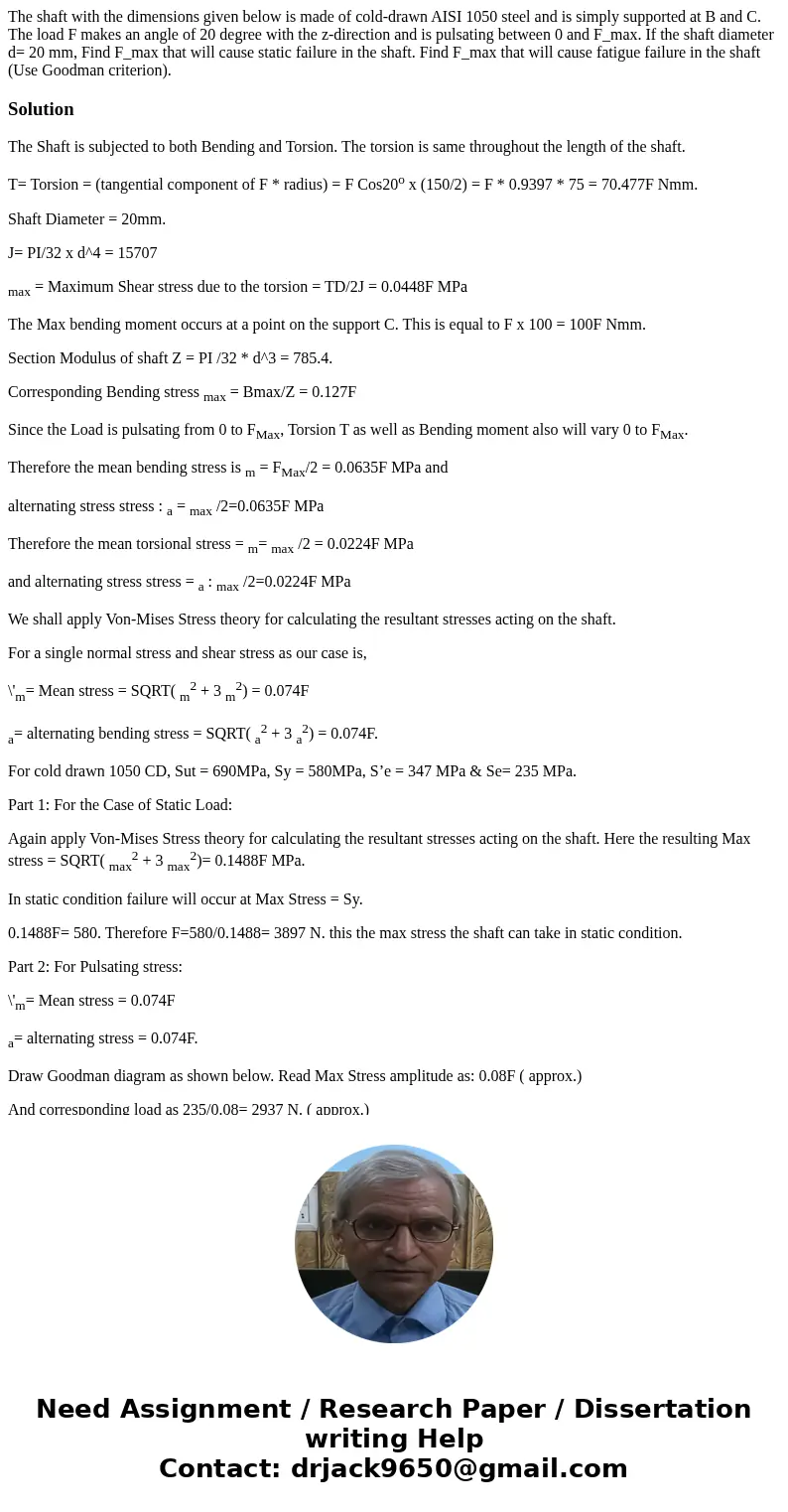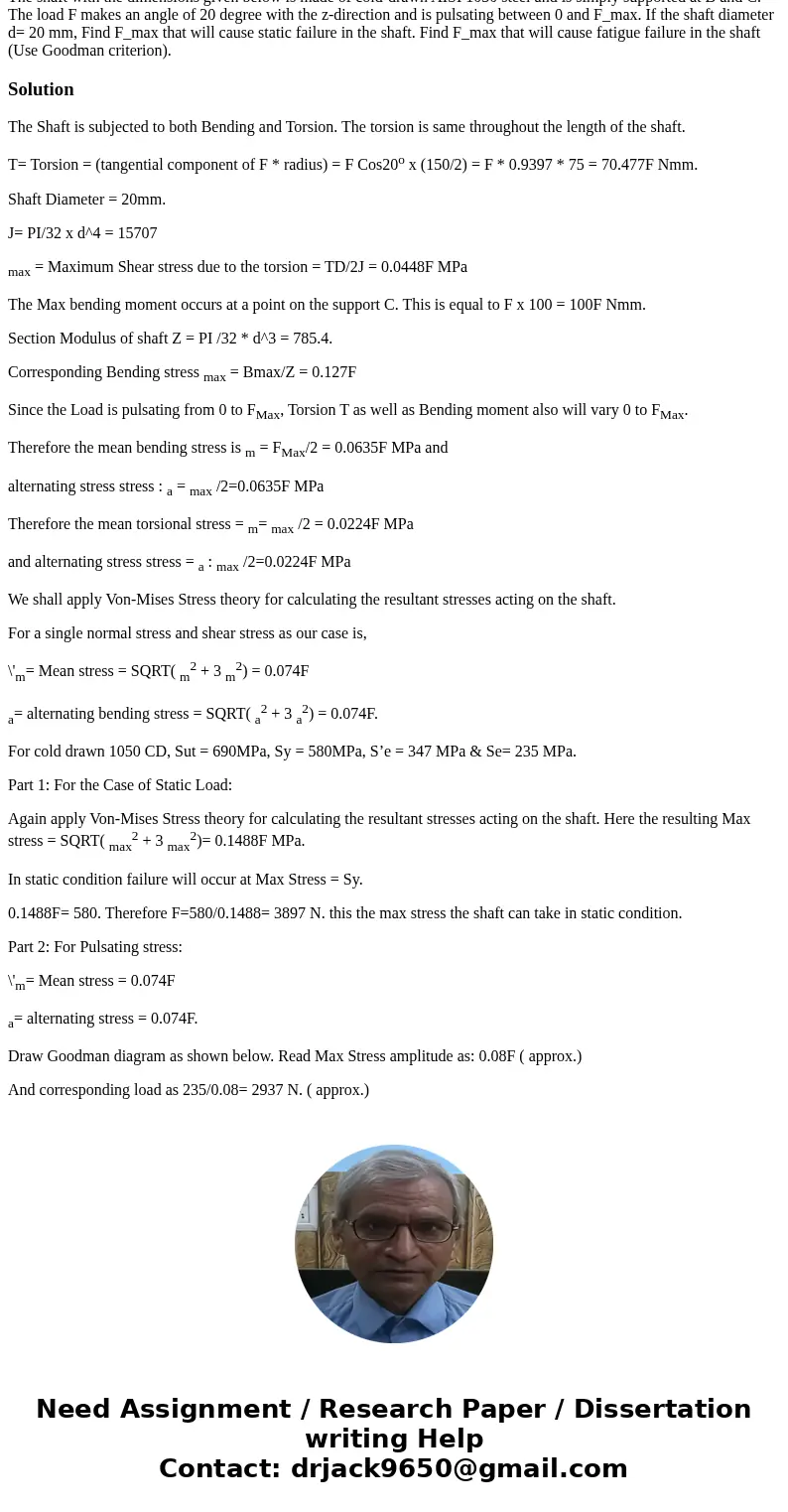The shaft with the dimensions given below is made of colddra
Solution
The Shaft is subjected to both Bending and Torsion. The torsion is same throughout the length of the shaft.
T= Torsion = (tangential component of F * radius) = F Cos20o x (150/2) = F * 0.9397 * 75 = 70.477F Nmm.
Shaft Diameter = 20mm.
J= PI/32 x d^4 = 15707
max = Maximum Shear stress due to the torsion = TD/2J = 0.0448F MPa
The Max bending moment occurs at a point on the support C. This is equal to F x 100 = 100F Nmm.
Section Modulus of shaft Z = PI /32 * d^3 = 785.4.
Corresponding Bending stress max = Bmax/Z = 0.127F
Since the Load is pulsating from 0 to FMax, Torsion T as well as Bending moment also will vary 0 to FMax.
Therefore the mean bending stress is m = FMax/2 = 0.0635F MPa and
alternating stress stress : a = max /2=0.0635F MPa
Therefore the mean torsional stress = m= max /2 = 0.0224F MPa
and alternating stress stress = a : max /2=0.0224F MPa
We shall apply Von-Mises Stress theory for calculating the resultant stresses acting on the shaft.
For a single normal stress and shear stress as our case is,
\'m= Mean stress = SQRT( m2 + 3 m2) = 0.074F
a= alternating bending stress = SQRT( a2 + 3 a2) = 0.074F.
For cold drawn 1050 CD, Sut = 690MPa, Sy = 580MPa, S’e = 347 MPa & Se= 235 MPa.
Part 1: For the Case of Static Load:
Again apply Von-Mises Stress theory for calculating the resultant stresses acting on the shaft. Here the resulting Max stress = SQRT( max2 + 3 max2)= 0.1488F MPa.
In static condition failure will occur at Max Stress = Sy.
0.1488F= 580. Therefore F=580/0.1488= 3897 N. this the max stress the shaft can take in static condition.
Part 2: For Pulsating stress:
\'m= Mean stress = 0.074F
a= alternating stress = 0.074F.
Draw Goodman diagram as shown below. Read Max Stress amplitude as: 0.08F ( approx.)
And corresponding load as 235/0.08= 2937 N. ( approx.)


 Homework Sourse
Homework Sourse